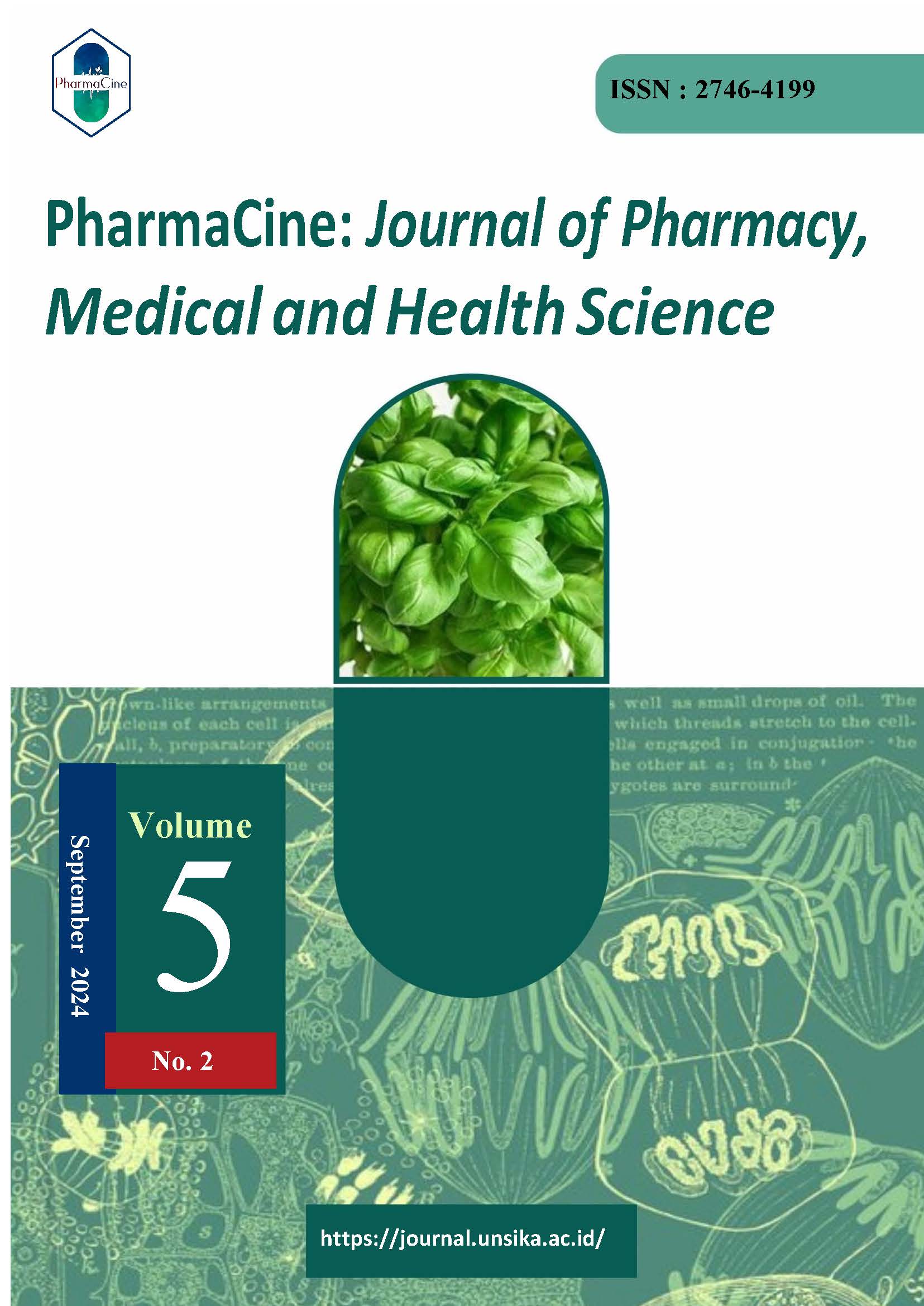Identifikasi Kandungan Bakteri Vibrio cholerae pada Produk Olahan Pepes Ikan Tuna (Thunnus sp.) Identification of the Bacterial Content of Vibrio cholerae On Tuna Fish Pepes (Thunnus sp.)
Isi Artikel Utama
Abstrak
Ikan tuna (Thunnus sp.) menjadi salah satu hasil perikanan yang potensial karena memiliki kandungan protein tinggi. Ikan tuna dapat diolah menjad berbagai macam olahan salah satunya pepes ikan yang merupakan hidangan tradisional Indonesia. Produk olahan hasil perikanan seperti pepes juga dapat mengalami penurunan mutu yang salah satunya dapat disebabkan oleh adanya bakteri, seperti bakteri Vibrio cholerae. Vibrio cholerae merupakan patogen oportunis di lingkungan muara dan laut. Bakteri tersebut dapat ditransfer ke dalam matriks makanan sehingga menyebabkan penyakit jika dikonsumsi oleh manusia. Tujuan dari penelitian ini adalah untuk mengidentifikasi kandungan bakteri Vibrio cholerae pada produk olahan pepes ikan tuna. Hasil uji biokimia berdasarkan SNI 01-2332.4-2006 menunjukkan bahwa pada pepes ikan tuna yang berasaldari salah satu UMKM di Daerah Istimewa Yogyakarta tidak mengandung atau negatif Vibrio cholerae sehingga layak untuk dipasarkan dan dikonsumsi oleh manusia.
Kata Kunci : Hasil Perikanan, Ikan Tuna, Mikrobiologi, Produk Olahan, Vibrio cholerae.
Unduhan
Rincian Artikel

Artikel ini berlisensiCreative Commons Attribution-ShareAlike 4.0 International License.
Seorang penulis yang menerbitkan dalam PharmaCine: Journal of Pharmacy, Medical and Health Science menyetujui persyaratan berikut:
- Penulis memegang hak cipta dan memberikan hak publikasi pertama kepada jurnal dengan karya tersebut secara bersamaan dilisensikan di bawah Lisensi Creative Commons Attribution-ShareAlike 4.0 International License yang memungkinkan orang lain untuk berbagi karya tersebut dengan pengakuan atas kepenulisan karya tersebut dan publikasi awal di jurnal ini
- Penulis dapat mengadakan perjanjian kontrak tambahan yang terpisah untuk distribusi non-eksklusif dari karya versi terbitan jurnal (misalnya, mempostingnya ke repositori institusi atau menerbitkannya dalam buku), dengan pengakuan atas publikasi awalnya pada tahun jurnal ini.
- Penulis diizinkan dan didorong untuk memposting karya mereka secara online (misalnya, di repositori institusi atau di situs web mereka) sebelum dan selama proses penyerahan, karena hal ini dapat mengarah pada pertukaran yang produktif, serta kutipan karya yang diterbitkan lebih awal dan lebih banyak (Lihat Pengaruh Akses Terbuka).
PharmaCine : Journal of Pharmacy, Medical and Health Science oleh https://journal.unsika.ac.id/ dilisensikan berdasarkan Creative Commons Attribution-ShareAlike 4.0 International License.
Anda bebas untuk:
- Bagikan, salin, dan distribusikan ulang materi dalam media atau format apa pun
- Mengadaptasi, mencampur ulang, mengubah, dan mengembangkan materi untuk tujuan apa pun, bahkan untuk tujuan komersial.
- Pemberi lisensi tidak dapat mencabut kebebasan ini selama Anda mengikuti ketentuan lisensi.
Referensi
Adhawati SS. (2019). Program pengembangan usaha produk intelektual kampus (PPMU-PPUPIK): Produk Tuna Nut Cookies. J Pengabdi Kepada Masy 3(1).
Azra, J. M. (2023). Bahaya Keamanan Pangan. Penerbit NEM.
Baron, E. J., & Finegold, S. M. (2017). Bailey & Scott's Diagnostic Microbiology. Mosby.
Chowdhury, F.R., Nur, Z., Hassan N., von Seidlein, L., & Dunachie, S. (2017). Pandemics, pathogenicity & changing molecular epidemiology of cholera in the era of global warming. Ann Clin Microbiol Antimicrob, 16:10.
DeMan, J. C. (2017). Microbial Growth on Tryptic Soy Agar. Journal of General Microbiology, 64(2), 223-228.
Food and Drug Administration (FDA). (2020). "Fish and Fishery Products Hazards and Controls Guide."
Forbes, B. A., Sahm, D. F., & Weissfeld, A. S. (2016). Bailey & Scott's Diagnostic Microbiology (14th ed.). Elsevier Health Sciences.
Kurniawan, A., & Wardhana, D. (2017). Teknologi pengolahan pepes ikan dalam industri rumahan. Jurnal Pengolahan Hasil Perikanan Indonesia, 20(1), 85-94.
Ottaviani, D., Leoni, F., Rocchegiani, E., & Canonico, C. (2018). Improved detection of pathogenic Vibrio species in seafood with the use of selective Thiosulfate Citrate Bile Salt Sucrose (TCBS) agar. Food Microbiology, 72, 124-130.
Rahmawati, A., & Suhartono, S. (2021). Media APW dalam pengayaan bakteri Vibrio spp. pada analisis epidemiologi. Jurnal Epidemiologi dan Kesehatan Lingkungan, 12(1), 78-85.
Setiawan, A., & Sutrisno, T. (2017). Pengaruh proses pengolahan terhadap pertumbuhan Vibrio cholerae pada pepes ikan. Jurnal Pengolahan Pangan, 12(1), 22-30.
Sulistiyati, T. D., Tambunan, J. E., Hardoko, M., Suprayitno, E., Sasmito, B. B., Chamidah, A.,& Kusuma, Z. R. A. (2022). Karakteristik organoleptik abon ikan tuna (Thunnus sp.) dengan penambahan jantung pisang. JFMR (Journal of Fisheries and Marine Research), 6(1), 10-19.

